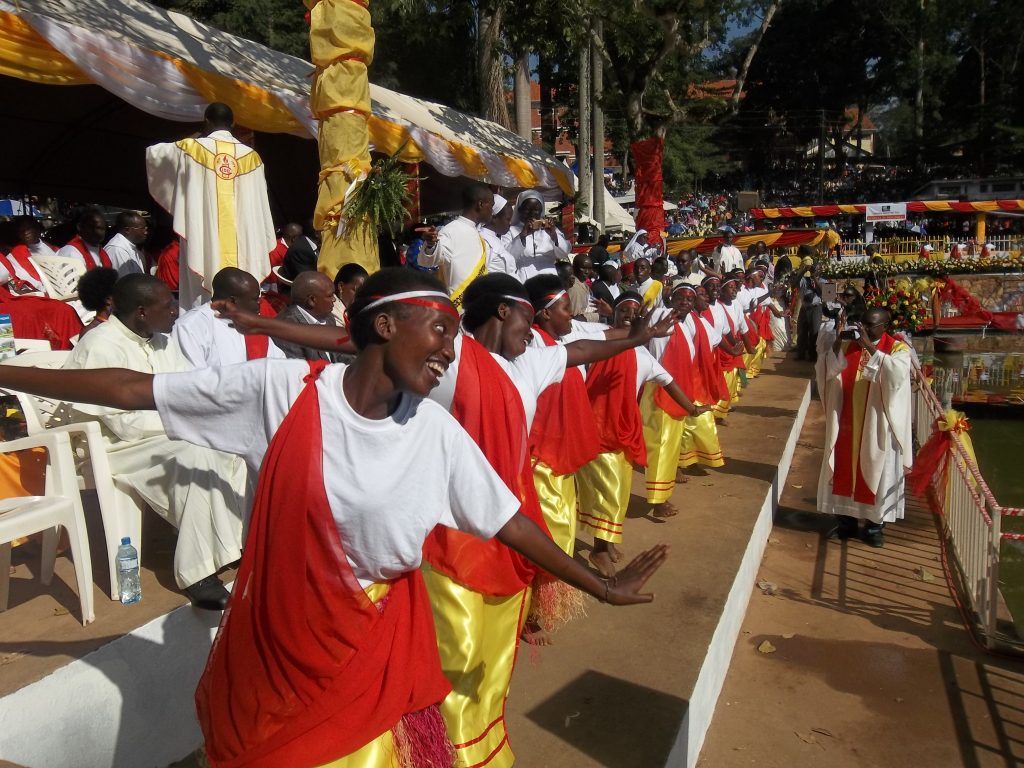
How does Uganda Martyrs Day Contribute to Tourism
The 3rd of June every year is an important time in Uganda’s Calendar because it’s the day the country commemorates the Uganda Martyrs day, to honor the 45 young converts of both Anglicanism (23) and Catholicism (22) that lost their lives on the orders of then King of Buganda Kingdom-Kabaka Mwanga II between 31st January 1885 and 27th January 1887.
Uganda Martyrs Day is not just a religious public holiday but also a Faith-based tourist product. This day draws more than 1 million pilgrims from Uganda as well as neighboring countries (such as Kenya, Rwanda, Burundi and Tanzania) and far places such as South Africa, Canada, United States, Nigeria, Singapore, Australia, United Kingdom, Malawi, Ireland, Germany and Italy to Namugongo found within the outskirts of Kampala City. This year’s (2019) celebration marks 134 years since martyrs were killed and will attract both religious people and tourists from all over the World. Security has already been tightened at Namugongo and strict security guidelines have been issued by Police ahead of the event.
Kabaka Mwanga II was Buganda Kingdom’s 31st King who took over power on 18th October 1884 at 16 years old after his father’s passing. King Mwanga during his reign regarded the Christian Missionaries as his greatest threat and was more worried about the increasing influence of Christianity as well as the rise of a new class of officials who were educated, had a particular religious belonging and had an aim of changing Ganda society, making them different from the traditional chiefs.
Kabaka Mwanga’s rage was even aggravated by Germany’s invasion of the present-day Tanzania and because of this, he gave an order for the murder of Joseph (or Yusufu) Rugarama, Noah (or Nuwa) Serwanga and Mark (or Makko) Kakumba who had converted to Christianity. Following advice from his Prime Minister on 29th October 1885, the King also ordered for the assassination of the Anglican Bishop James Hannington from the eastern boundary of Buganda Kingdom as a way of preventing a possible British invasion.
Several of Kabaka Mwanga’s pages were also executed in 1886 on his orders for converting to either Christianity or Islam. A total of 45 Christian converts including 23 Anglicans and 22 Catholics were executed from different parts of Buganda Kingdom within a period of 2 years. On 3rd June 1886 alone, over 32 converts were burnt to death in Namugongo for not obeying orders of denouncing their new found Faith. Nonetheless, the Uganda Martyrs days not only honors Martyrs executed on 3rd June but even those killed before and after this date. It is also because of Mwanga’s ruthless actions that led to his ousting in 1888 following a British-backed Revolution. However, he reached an agreement with the British to hand over some of his authority/powers to the British East Africa Company in exchange for being restored as the King in 1889. He however double-crossed the British who later exiled him in 1897 and eventually leading to his conversion into Christianity.
Namugongo Martyrs Shrine has since then become an important religious site and has gradually turned into a faith-based tourism site that attracts millions of pilgrims and tourists. Namugongo has attracted a number of people in the past years and gained Global recognition with the recent being the visit of Pope Francis (in November 2015) where he conducted a Holy Mass after honoring the Anglican Martyrs at the Anglican Shrine. Uganda’s Martyrs day doesn’t only attract pilgrims or tourists but also venders of different things ranging from religious items, clothes, food, chilled drinks (both alcoholic and non-alcoholic) to accommodation facilities especially tents.
Uganda’s Martyrs day has adversely promoted faith-based tourism in that tourists, from within and outside Uganda make pilgrimage to the Namugongo Martyrs Shrine. It’s for this reason that Uganda Tourism Board (UTB) introduced the Uganda Martyrs trail to reward tourists with the remarkable Martyrs experience. The trail covers places such as Kigungu Parish (Entebbe), Mapeera tree (in Kisubi), Munyonyo, Potian Ngondwe, Mapeera grave, Kabaka’s Lake, Mackays Cave, Busega Church. St. Balikudembe and Namugongo among others.


